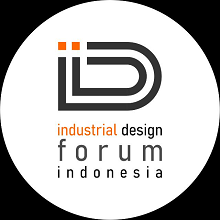STRATEGI NARASI VISUAL DALAM PERANCANGAN PICTURE BOOK STRESS MANAGEMENT UNTUK USIA 6-9 TAHUN
Abstract
The stress experience in the childhood poses significant and enduring risks to both physical and psychological development. Stress not only adversely affects physical health but also correlates with serious issues such as suicide, psychological symptoms, depression, and school dropout rates. The age of 6-9 years is a period of transition in exploratory learning and playing to formal schooling with exams so that this age is vulnerable to early stress. The activity of reading books that children and parents do can provide a sense of comfort, thereby reducing children's stress. Picture books are believed to be related to the formation of children's character, introduce concepts, and have a positive impact on the world of children. The visual narrative implied in the picture book can be a visual approach that attracts children. Until now, there has not been much research discussing visual narrative stress management for children aged 6-9 years. Research on book design using a visual narrative approach to introducing stress management as an alternative solution to problems needs to be carried out and studied. This study aims to design a visual narrative strategy that is implemented in a picture book illustration with the theme of stress management. This study uses a qualitative approach with literature studies, document studies, observations, and interviews to design the visual narrative’s strategy. The finding is that a visual narrative approach of contradiction, metaphor, and humor in children's books can be a illustration approach that provides comfort and a relaxing effect with easy-to-see illustrations.
Keywords
Full Text:
PDF (Bahasa Indonesia)References
Afifi, T. D., Harrison, K., Zamanzadeh, N., & Callejas, M. A. (2020). Testing the Theory of Resilience and Relational Load in Dual Career Families: Relationship Maintenance as Stress Management. Journal of Applied Communication Research, 48(1), 5–25.
DOI:https://doi.org/10.1080/00909882.2019.1706097
Aqiela, H. S., & Sihombing, R. M. (2023). Analisis Ilustrasi Buku Anak sebagai Media Edukasi Stress dan Depresi kepada Anak. Imatype: Journal of Graphic Design Studies, 2(2), 79–88.
DOI:https://doi.org/10.37312/imatype.v2i2.7457
Beckman, R. (2018). Lucy Takes the Stage: a Story for Children with Anxiety. Bank Street. https://educate.bankstreet.edu/independent-studies/202
Bhargava, D., & Trivedi, H. (2018). A Study of Causes of Stress and Stress Management among Youth. IRA-International Journal of Management & Social Sciences, 11(3), 108–117.
DOI:https://doi.org/10.21013/jmss.v11.n3.p1
Franke, H. A. (2014). Toxic Stress: Effects, Prevention and Treatment. Children, 1(3), 390–402.
DOI:https://doi.org/10.3390/children1030390
Garner, P. W., & Parker, T. S. (2018). Young Children’s Picture-Books as a Forum for the Socialization of Emotion. Journal of Early Childhood Research, 16(3), 291–304.
DOI:https://doi.org/10.1177/1476718X18775760
Ghozalli, E. (2020). Panduan Mengilustrasi dan Mendesain Cerita Anak untuk Tenaga Profesional. Pusat Pembinaan Bahasa dan Sastra, Badan Pengembangan dan Pembinaan Bahasa, Kementerian Pendidikan dan Kebudayaan, Republik Indonesia.
Harini, N. (2013). Terapi Warna untuk Megurangi Kecemasan. Jurnal Ilmiah Psikologi Terapan, 1(2), 291–303.
DOI:https://doi.org/10.22219/jipt.v1i2.1584
Hasibuan, I. S., Anggraini, S., Hasibuan, Q., & Hasibuan, I. W. (2022). Implementasi Desain Ruang Kelas dalam Meningkatkan Kenyamanan Belajar Anak di RA AL-Ihsan. Pema: Jurnal Pendidikan Dan Pengabdian Kepada Masyarakat, 2(3), 200–207.
DOI:https://doi.org/10.56832/pema.v2i3.307
Lori, L. (2013). Stress Free Kids: a Parent’s Guide to Helping Build Self-Esteem, Manage Stress, and Reduce Anxiety in Children. Adams Media.
Moruzi, K., Chen, S.-W. S., & Venzo, P. (2021). Public Health, Polio, and Pandemics: Fear and Anxiety about Health in Children’s Literature. Children’s Literature in Education, 53, 97–111.
DOI:https://doi.org/10.1007/s10583-021-09439-8
Mufdi T, A., Ernawati, D., & Tranggono, T. (2020). Perancangan Produk Multifunction Box yang Ergonomis dengan menggunakan Metode Pahl & Beitz. Juminten: Jurnal Manajemen Industri Dan Teknologi, 1(5), 1–12.
Mulyati, M. I. (2022). Studi Pemilihan Warna terhadap Interior Kamar Praktek Dokter dan Ruang Tunggunya Anak Berkaitan terhadap Tingkat Stres Pasien. Jurnal Pendidikan Dan Konseling, 4(6), 7464–7468.
DOI:https://doi.org/10.31004/jpdk.v4i6.9519
Paramarta, F. N. (2021). Konsep Interior Ruang Fisioterapi Anak Berkebutuhan Khusus pada Klinik Anak Usia 1-5 Tahun. Akselerasi: Jurnal Ilmiah Nasional, 3(1), 42–49.
DOI:https://doi.org/10.54783/jin.v3i1.358
Rohmiyati, Y. (2019). Proses Pelaksanaan Biblioterapi sebagai Alternatif Penyembuhan Individu melalui Membaca Buku. Anuva Jurnal Kajian Budaya, Perpustakaan, Dan Informasi, 3(1), 11–17.
DOI:https://doi.org/10.14710/anuva.3.1.11-17
Sari, A. S. P., Lestari, N. E., & Istiani, H. G. (2021). Storytelling using Picture Books Reduces Anxiety in Hospitalized Preschool Children. Jurnal Ilmiah Ilmu Keperawatan Indonesia, 11(3), 142.
DOI:145. https://doi.org/10.33221/jiiki.v11i03.1350
Sekhavatpour, Z., Khanjani, N., Reyhani, T., Ghaffari, S., & Dastoorpoor, M. (2019). The Effect of Storytelling on Anxiety and Behavioral Disorders in Children Undergoing Surgery: a Randomized Controlled Trial. Pediatric Health, Medicine and Therapeutics, 2019:10, 61–68.
DOI:https://doi.org/10.2147/PHMT.S201653
Serafini, F., & Coles, R. (2015). Humor in Children’s Picture Books. Reading Teacher, 68(8), 636–638.
DOI:https://doi.org/10.1002/trtr.1361
Templeton, T. (2020). Picture Perfect: the Role of Picture Books in a Secondary Classroom. Scan: The Journal for Educators, 39(6), 17–20.
Utami, D. P., Melliani, D., Maolana, F. N., Marliyanti, F., & Hidayat, A. (2021). Iklim Organisasi Kelurahan dalam Perspektif Ekologi. JIP: Jurnal Inovasi Penelitian, 1(12), 2735–2742.
DOI:https://doi.org/10.47492/jip.v1i12.536
DOI: http://dx.doi.org/10.22441/narada.2023/v10.i3.009
Refbacks
- There are currently no refbacks.
Fakultas Desain dan Seni Kreatif
Universitas Mercu Buana
Gedung E Lantai 4
Jl. Raya Meruya Selatan no.1, Kembangan, Jakarta 11650
Tlp./Fax: +62215871335
Journal International Standard Serial Number (ISSN) Registration:
The Journal is indexed by:
Tools for Citations & Plagiarism Detection:

Ciptaan disebarluaskan di bawah Lisensi Creative Commons Atribusi-NonKomersial 4.0 Internasional
 NARADA: Jurnal Desain dan Seni
NARADA: Jurnal Desain dan Seni

























